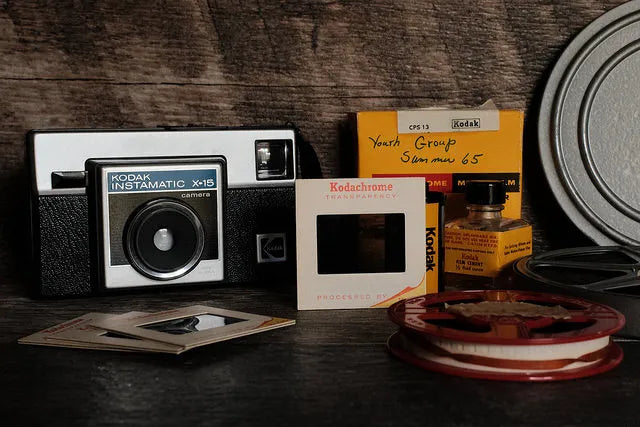
In a world where memories were once captured in monochrome, the introduction of Kodachrome film in 1935 was nothing short of revolutionary. Developed by Leopold Godowsky Jr. and Leopold Mannes, two musicians-turned-scientists, Kodachrome redefined how we see and preserve the world, transforming both photography and cinema. The vivid colours and rich tones it introduced left an indelible mark on visual storytelling, one that continues to inspire creative expression today—including in our own Kodachrome Collection.
At a time when black-and-white dominated photography, colour imagery was rare and difficult to achieve. But with Kodachrome’s unique subtractive colour process, it became possible to produce stunning, true-to-life images. By layering red, green, and blue, the film captured light and colour in a way that delivered unprecedented depth and vibrancy. This innovation made colour photography accessible, allowing photographers and filmmakers to convey life’s richness and detail like never before.

The Wizard of Oz quartet Eric Carpenter publicity Kodachrome 1939 is a photograph by David Lee Guss
Kodachrome quickly gained recognition for its groundbreaking ability to capture vibrant hues and vivid detail. One of the earliest and most famous uses of the film in cinema was The Wizard of Oz (1939). As Dorothy stepped from the sepia-toned world of Kansas into the technicolour brilliance of Oz, Kodachrome played a vital role in creating the visual magic that left audiences breathless. The film’s striking use of colour became iconic, forever intertwining Kodachrome with cinema’s golden age.

The June 1985 issue of National Geographic magazine made the "Afghan Girl" world famous. Cover photograph by Steve McCurry, Nat Geo Image Collection
In photography, it was legends like Slim Aarons who brought Kodachrome’s potential to life. Aarons used the film to capture the glamorous post-war lifestyles of the elite, creating timeless, sun-drenched images that embodied aspiration and luxury. His portraits of celebrities and socialites—whether lounging by turquoise pools or attending lavish events—were bathed in the lively, rich tones that Kodachrome was known for. Aarons, alongside other pioneers like Steve McCurry and Robert Capa, cemented Kodachrome as the ultimate medium for capturing a colourful world, one filled with character, nostalgia, and story.
Kodachrome’s discontinuation in 2009 marked the end of an era. As digital photography and filmmaking became the norm, the demand for traditional film stocks diminished. But despite this, Kodachrome’s legacy remains as strong as ever. Its influence can still be seen in the way we approach colour in modern photography, film, and even design.
What made Kodachrome revolutionary wasn’t just its technical advancements; it was the way it allowed us to see the world differently. It brought colour to the forefront of visual storytelling and changed the way we documented our lives, our surroundings, and our history. Even in a digital world, Kodachrome’s impact on how we perceive colour and capture memories is undeniable.

Socialite Bikers, April 1970: Mr and Mrs Harry Loy Anderson Jnr ready for a motorbike ride, Palm Beach, Florida. (Photo by Slim Aarons/Getty Images) The inspiration behind our Marigold Shirt.
Our Kodachrome Collection takes cues from the iconic artists who defined this pivotal moment in cinematic and photographic history. Each piece reflects the distinctive silhouettes and styles of mid-century fashion, crafted with carefully selected fabrics that embody the rich textures of that era, while the bold, vivid colours pay homage to the striking hues of Kodachrome film.

